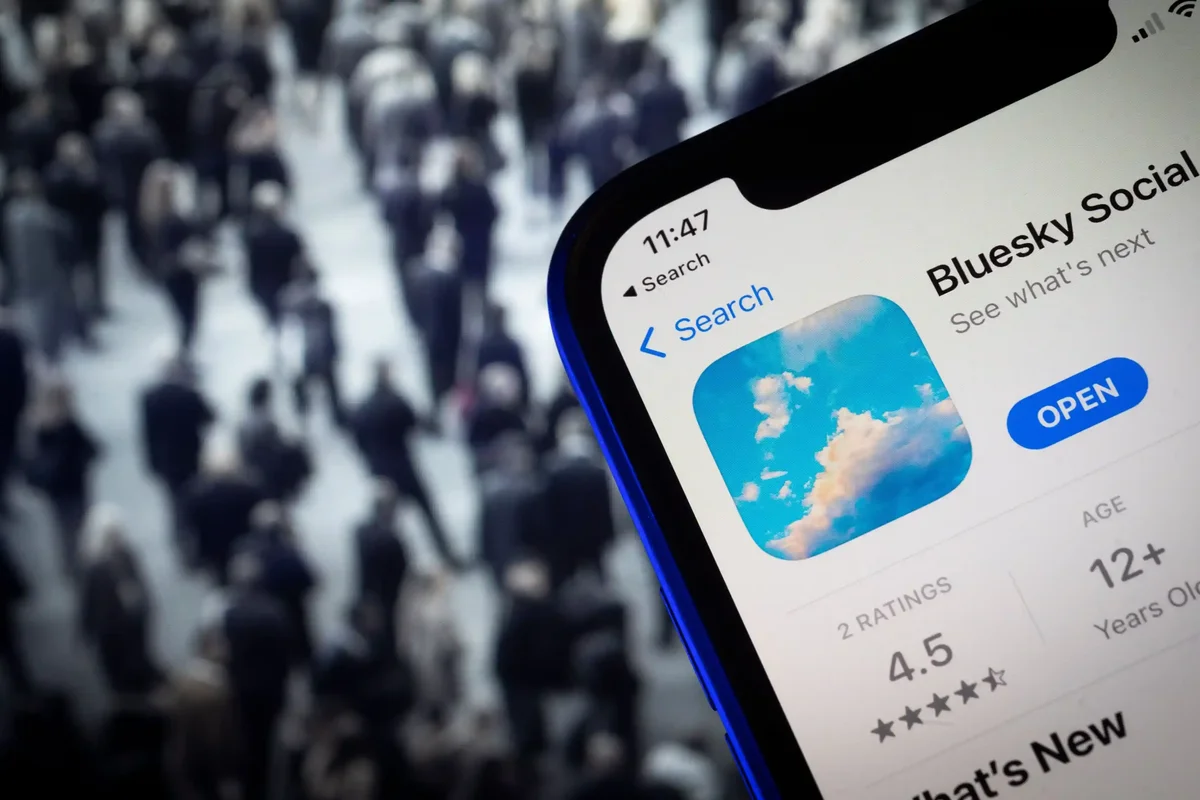News Desk
The News Desk provides timely and factual coverage of national and international events, with an emphasis on accuracy and clarity.

Bluesky has added 700,000 new users since the US election as people flee X, formerly known as Twitter.
File/Shutterstock
Bluesky has seen surges in popularity amid controversies surrounding X
Bluesky ranks behind Threads despite growth, introduces new features to attract wider audience
Congresswoman Alexandria Ocasio-Cortez returns to Bluesky, calls it more authentic space to connect with 'real human beings'
Bluesky, the social media platform formed alongside X by its former boss Jack Dorsey, gained over 700,000 new users in the week following the U.S. election, according to data reported by The Guardian.
Users from North America and the U.K. flocked to Bluesky, boosting its global user base to 14.5 million, up from 9 million in September. The platform has repeatedly seen surges in popularity amid controversies surrounding Elon Musk’s management of X and his pro-right-wing approach.
Musk’s support of U.S. President-elect Donald Trump and the rebranding of Twitter to X led to a significant user exodus in recent months.
A 'refuge' from X
Bluesky was developed alongside Twitter by former Twitter CEO Jack Dorsey. It is a decentralized social app designed to give users more control over their experience. It combines a Twitter-like interface with features like algorithmic choice, federated design, and community-based moderation.
The platform emphasizes transparency in its development and lets users manage their own data, with the added flexibility to cross-post on other platforms without needing multiple accounts, unlike X.
Users on Bluesky can post 300-character “skeets” with photos and GIFs (but not videos) and can reply, repost, quote, and like posts. They also have access to various feeds, including “Following,” “Popular With Friends,” “What’s Hot,” and a “Discover” page.
Axel Bruns, a digital media researcher, highlighted the platform's appeal as a "refuge" from the issues plaguing X. He noted that Bluesky offers a more effective system for blocking and suspending problematic accounts, making it attractive for those seeking a safer social media environment.
“The more liberal kind of Twitter community has really now escaped from there and seems to have moved en masse to Bluesky", he said.
Bluesky began as a project within Twitter but became an independent entity in 2022, now primarily owned by CEO Jay Graber.
In September, Bluesky saw a jump of 3 million new users when X faced a temporary suspension in Brazil. Another 1.2 million joined after X allowed users to view posts from those who had blocked them.
Bluesky spokesperson Emily Liu noted that new members ranged from pop culture fans to city planners, showing the platform’s growing diversity.
X set to become 'Trump propaganda outlet'
Historian Ruth Ben-Ghiat, who amassed 250,000 followers on X, gained 21,000 followers within her first day on Bluesky. She expressed concern over X's future under a Trump-aligned owner, suggesting that the platform could turn into a far-right propaganda hub.
“I am still on X but after January, when X could be owned by a de facto member of the Trump administration, its functions as a Trump propaganda outlet and far-right radicalization machine could be accelerated,” she said.
New York Congresswoman Alexandria Ocasio-Cortez also recently announced her return to Bluesky, celebrating the platform as a more authentic space to connect with "real human beings," drawing 27,000 likes on her post.
Despite its growth, Bluesky ranks behind Threads, which reported 275 million active users in November. In response, Bluesky has rolled out new features, such as direct messaging and video compatibility, to appeal to a wider audience and set itself apart from Meta's Threads.
Bruns noted that the influx of users has created “growing pains” but also injected new life into the platform.










Comments
See what people are discussing